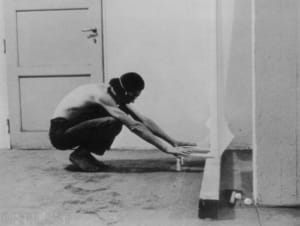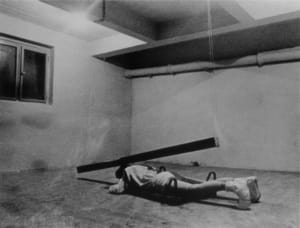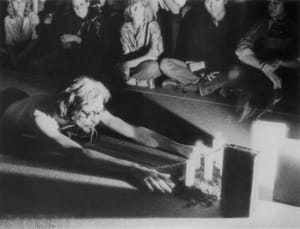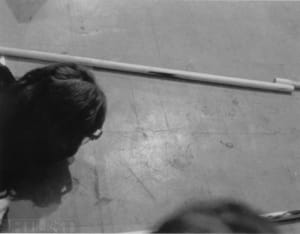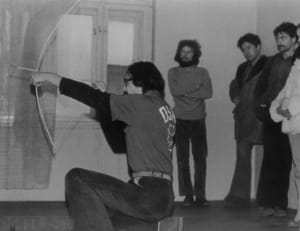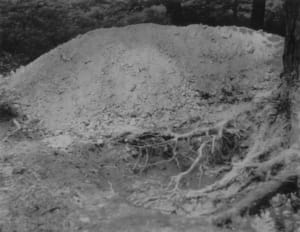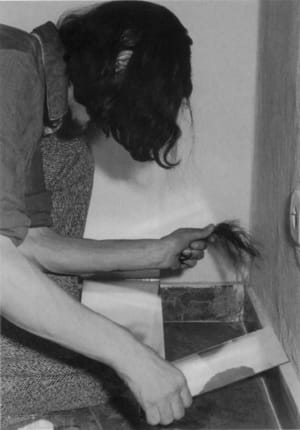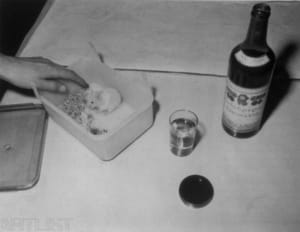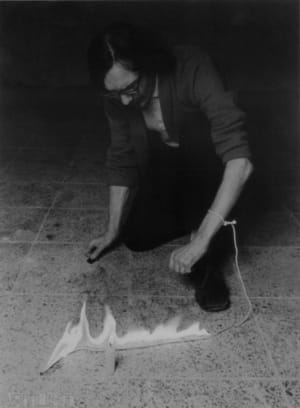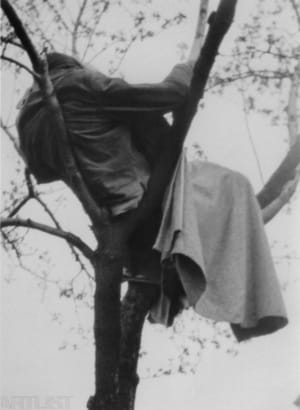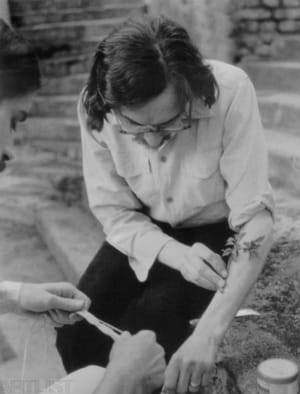- First Name
- Petr
- Surname
- Štembera
- Born
- 1945
- Birth place
- Plzeň
- Place of work
- Prague
- Keywords
- CSU Library
- ↳ Find in the catalogue
About artist
Petr Štembera is one of the key figures of Czech action art. He was one of the leading personalities of the Prague body art circle and since 1970 has mediated contact with important representatives of action art from behind the Iron Curtain and inside the Soviet bloc.
In 1970 and 1971 Štembera made a number of interventions in the natural environment, be this through delimiting a forest or transforming a bow using artificial elements such as cords and rolls of film. Perhaps Štembera’s most important land art event was Large Puddle (1970), in which he attempted to level off a flooded meadow into the shape of a triangular crotch. Even in these early works Štembera was becoming aware of his body. A huge influence on his body art was a stay in Paris, where he spent ten days without food. Here he learned how enriching it can be for a person to subject themselves to physical and psychological extremes. Yoga, which Štembera practised in the 1970s, also had an undeniable influence on his expanded perception of his own body. At the start of the 70s, his tendency toward asceticism led Štembera to create a number of personal, very demanding pieces, which he performed himself or with the minimum number of assistants. The need for communication led him finally to present his performances to a close circle of viewers, and to the visualisation of the issues which he was concerned with.
The earliest of Štembera’s events took place in the countryside, and many later pieces examined the relationship of the human body to natural entities. These works include Grafting (1975), in which Štembera granted a branch of a shrub onto his arm by a method common in fruit-farming, or Sleeping in a Tree (1975), in which after three nights without sleeping he spent the fourth in a tree. Petr Štembera’s early work is still concerned with the spiritual search for himself. It is only later that the body as subject of internal experience becomes both object and instrument. The artist often exposes himself to dangerous situations and pain. This strongly resonated with the deformed normalisation situation and during the 1970s this was not an isolated gesture even in the West, where, alongside sexual and gender taboos, that linked with pain was also destroyed. Štembera’s events were based on post-war existentialist thought. In an uncertain world man could only confirm his existence through acting in the here and now. Performance was a personal act demonstrating free will in an unfree world. It was a method of liberation as well as an expression of anxiety.
Around the mid-seventies the group around Petr Štembera began to organise “performance soirées” for a small group of invited viewers. The events took place in secret in various different places. Štembera mounted a series of extreme body art performances in which he exposed his own body and sometimes those of the viewers to danger. His courage, along with his abilities honed during his practice of yoga, allowed him to realise extremely demanding performances. He often worked with processing materials, such as acid and fire, which lent an element of chance and unpredictability to his performances. The aspect of torment and the symbolism of these performances strongly resonated with the atmosphere of normalisation.
Like Karel Miler and Jan Mlčoch, Petr Štembera decided to terminate his activities at the end of the seventies. The reason was both exhaustion, but also the feeling of the ridiculousness of artificially risky events when compared to the very real threat posed to signatories of Charta 77. In Štembera’s case the decision was also influenced by his interest in other psycho-physical activities, for instance oriental martial arts.
- Author of the annotation
- Pavlína Morganová
- Published
- 2003
CV
autodidact
Exhibitions
- Group exhibitions not included in ARTLIST.
-
2007
Prague Biennale 3
2004
Kurze Karrieren (Short Careers)
Museum Moderner Kunst Stiftung Ludwig - MUMOK , Vienna
2000
Global Conceptualism - Points of Origin, 1950s-1980s
MIT List Visual Arts Center, Cambridge
1999
Global Conceptualism: Points of Origin 1950s–1980s
Queens Museum of Art, New York City
1997
Karel Miler, Petr Štembera, Jan Mlčoch
City Gallery Prague, Prague
- Collections
-
National Gallery , Prague
Moderna Galerija - Ljubljana, Ljubljana
Monography
- Monography
Katalog vydaný u příležitosti výstavy v Galerii hl. města Prahy, (Miler Karel, Štembera Petr, Mlčoch Jan), 1997
- Articles
2004
Neuburger, Susanne & Saxenhuber, Hedwig: Kurze Karrieren, katalog, Museum Moderner Kunst, Wien, Interviews with Petr Stembera and others.
1997
Karel Miler, Petr Štembera, Jan Mlčoch
catalogue, exhibition City Gallery Prague, Prague





